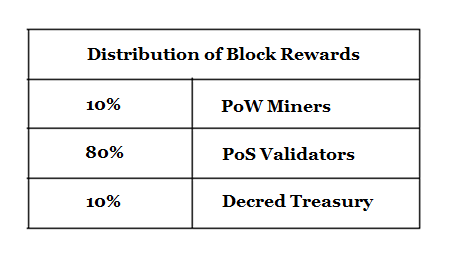Each consensus mechanism has certain advantages and disadvantages. Hybrid PoW/PoS aims to stand out for making less use of the weaknesses of these consensus mechanisms. However, before looking into Hybrid PoW/PoS in detail, we recommend that you have sufficient knowledge of the following topics. If there is a subject you want to learn or remember, you can just click on it.
In Hybrid PoW/PoS, Proof of Work (PoW) miners are responsible for generating new blocks to be added to the blockchain. These new blocks are then validated or rejected by the Proof of Stake (PoS) consensus mechanism. As in PoS, validators gain voting rights by staking a certain number of tokens. However, this voting process is not performed on the entire network.
In Hybrid PoW/PoS, validators on the network are often randomly selected to validate new blocks. For example, if 3 out of 5 validators agree, a new block can be added to the blockchain. Once the transaction is completed, the block rewards are distributed according to the protocol rules. The aim here is to provide safer transactions by going through both Proof of Work and Proof of Stake validator mechanisms.
An Example: Decred (DCR)
As a cryptocurrency project that leverages Blockchain Technology, Decred (DCR), uses a hybrid consensus mechanism. Stakeholders determine and implement rules in this mechanism. They can provide insight into the development of the project and be involved in the management of the project treasury. The distribution of block rewards for each block created on the Decred blockchain are as follows:

Decred miners have a role like Bitcoin miners, but earn 10% of the block rewards.


